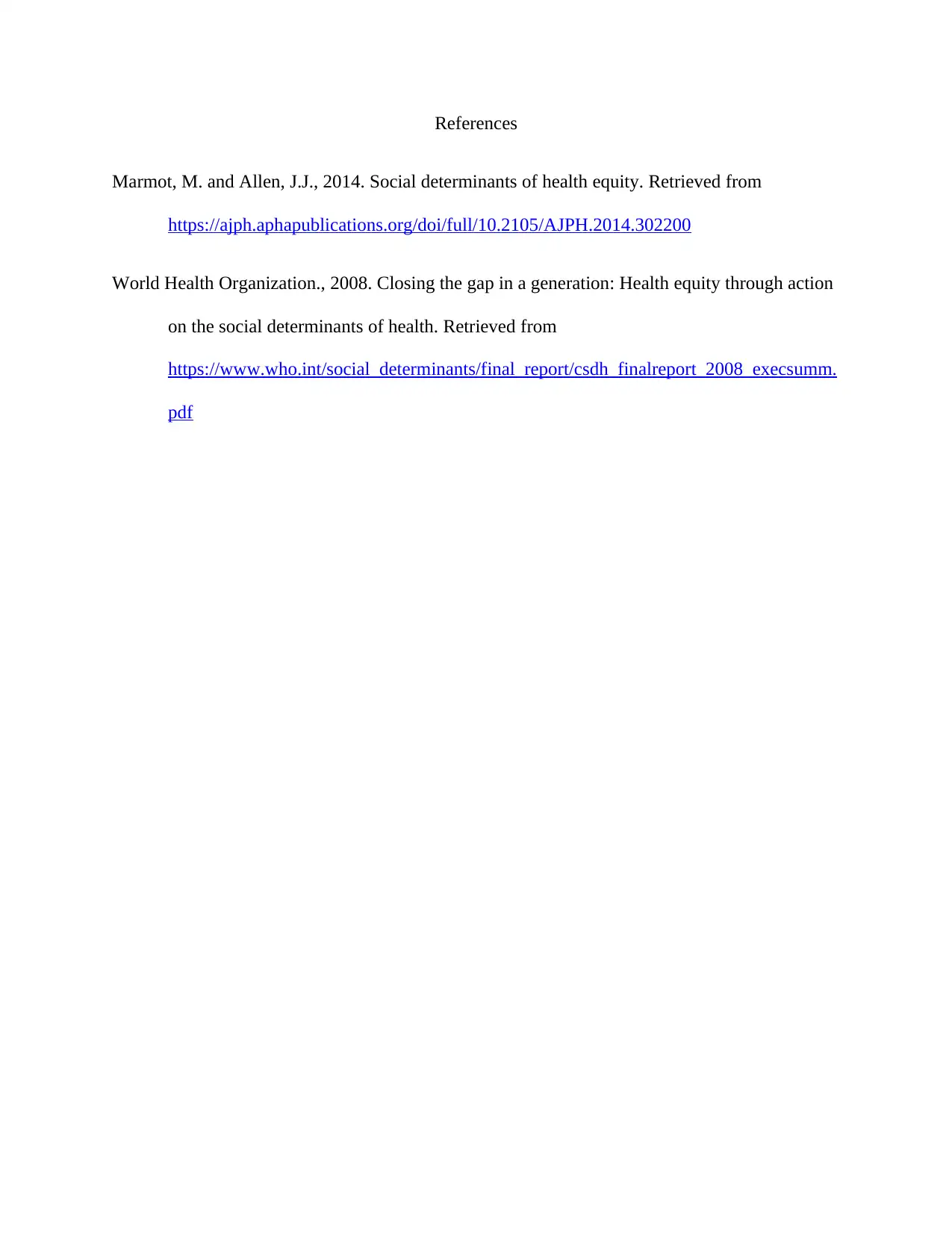Health Inequalities: Prevention, Solutions, and Global Health Report
VerifiedAdded on 2022/11/28
|2
|351
|29
Report
AI Summary
This report delves into the critical issue of health inequalities and highlights the importance of prevention strategies. It examines the social determinants of health, such as income and wealth, and their impact on health outcomes. The report emphasizes the need for proactive measures to reduce health disparities, including interventions to prevent the onset of health problems and to mitigate the impact of existing diseases. It references key publications by Marmot and Allen (2014) and the World Health Organization (2008), underscoring the role of policy and global collaboration in addressing health inequalities. The report stresses the importance of governments, communities, and individuals working together to create healthier environments and ensure access to universal healthcare services. The overall goal is to promote health equity and reduce the burden of preventable diseases worldwide.
1 out of 2








![[object Object]](/_next/static/media/star-bottom.7253800d.svg)